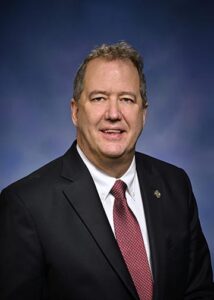Students complete sonar theory capstone project at Thunder Bay National Marine Sanctuary

Courtesy Photo On Monday, Northwestern Michigan College students and Thunder Bay National Marine Sanctuary hydrographers are seen standing on the SWATH, a mapping vessel, in this photo provided by Sarah Morrison. The students will help hydrographers throughout the week to map portions of the Sanctuary waters.
ALPENA — The Thunder Bay National Marine Sanctuary is hosting students from Northwestern Michigan College (NMC) in Traverse City who are working on their capstone focused on sonar theory, according to Sarah Morrison, Sanctuary media and outreach specialist.
Andi Yoxsimer, Sanctuary resource protection specialist, explained that the Great Lakes Environmental Research Lab and Sanctuary partnership has a goal of mapping the entire Sanctuary, 4,300 square miles, in support of Lakebed 2030.
“(Lakebed 2030) is aimed at mapping all of the Great Lakes by 2030,” Yoxsimer said.
Yoxsimer said that the work the NMC students are doing at NOAA will potentially help them find shipwrecks, but will also make nautical navigation safer.
“We’re always trying to find new shipwrecks because there are up to 100 (shipwrecks) that we haven’t found within the Sanctuary waters,” Yoxsimer said. “But on top of that, there are a lot of other benefits of mapping…you can learn a lot about underwater habitats for animals… (and) updating nautical charts for safer navigation.”
Melissa Weber, a hydrographer at the Sanctuary, explained that because the shipping industry is a prominent part of Michigan’s economy, mapping can support that infrastructure.
“The shipping industries in the Great Lakes support millions of jobs…(supports) the economy,” Weber said. “So, having good nautical charts and knowing we’re safe to navigate…mapping is really important to that.”
Sonya Laws, an NMC student majoring in marine technology and electronics, said that the experience at the Sanctuary is laying the foundation for future internships.
“This is actually turning out to be like the perfect prep for my internship,” Laws said. “This is just getting some (experience) and (getting) the nerves flushed away.”
For Tyler Bristol, a recent graduate of NMC with a Bachelor of Science in marine technology, this capstone project is the last thing he needs for his graduation requirement. He starts his new job next week with Hibbard Inshore, an engineering company that specializes in Remotely Operated Vehicles (ROVs).
For Jacob Stremlow, the capstone aligns with his interests in hydrography.
“I really just want to be a hydrographic expert,” Stremlow said. “I like doing hydrography and finding stuff. I like charting. I like using the toys.”
Brendan Hunter, a hydrographer at the Sanctuary, explained that the mapping process involves them “mowing the lawn” which involves the hydrographer crew running parallel lines back and forth with their vessel in priority areas in the Sanctuary waters.
“We’ll create a 3D picture of the seafloor as we’re doing that,” Hunter said. “When we come back in, that’s actually when we do most of the hard work. We have to process the data…there is usually a lot of noise…and then stuff that we have to clean out of the data.”
Laws explained that they are not only measuring depth, but they are also measuring range and speed of sound.
“It is literally noise…So it’s just a really interesting way to see the sea floor,” Laws said.
Weber explained that unpredictable weather is a unique challenge that the Great Lakes present for hydrographers. She explained that the Great Lakes are much more “choppy” whereas in the ocean, for example, there is more time in between each wave.
“(In the Pacific) you could operate in full meter waves because of the long period between them, but here…a couple feet…they are so close together because it’s all wind driven…and a lot of bouncing,” Weber said.
Hunter noted that in some ways, the Great Lakes pose more challenges than the ocean.
“The same wave heights on the Great Lakes are more dangerous than an equivalent wave height in the ocean,” said Hunter.
Hunter, Yoxsimer, and Weber all said that it is an exciting time for them to conduct mapping in the Sanctuary because of the resources they now have, the help they are receiving from NMC students, and overall advancements in technology.
“Unfortunately, (we) have not found too many shipwrecks in the last 10, 15 years,” Yoxsimer said. “That’s just because we have not had the resources to do a lot of the large-scale mapping, like we do this year, which is one of the reasons why it’s so exciting.”
The NMC students arrived on Monday and will be leaving Friday.
Kayla Wikaryasz can be reached at 989-358-5688 or kwikaryasz@TheAlpenaNews.com.


